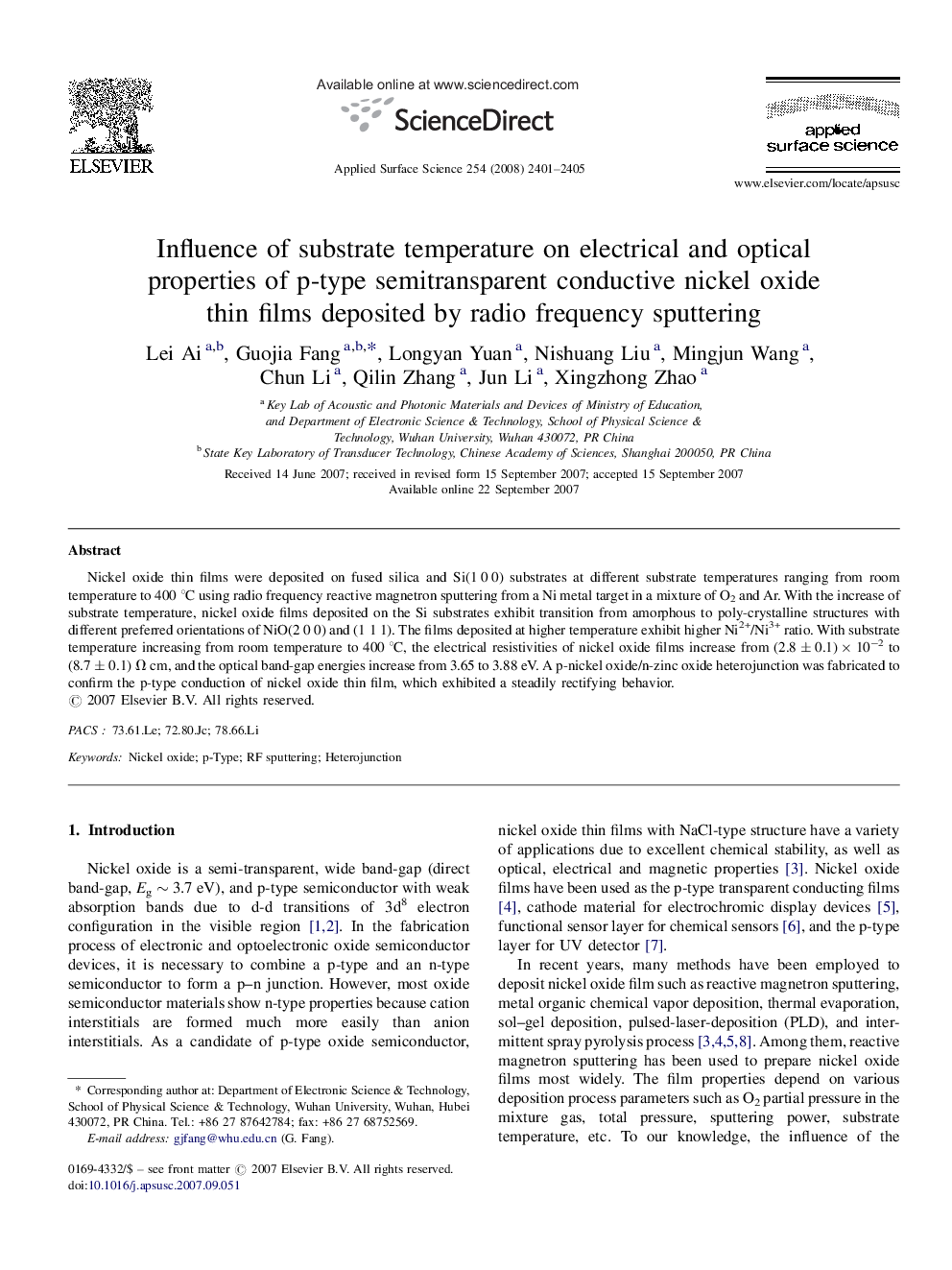| Article ID | Journal | Published Year | Pages | File Type |
|---|---|---|---|---|
| 5365865 | Applied Surface Science | 2008 | 5 Pages |
Abstract
Nickel oxide thin films were deposited on fused silica and Si(1 0 0) substrates at different substrate temperatures ranging from room temperature to 400 °C using radio frequency reactive magnetron sputtering from a Ni metal target in a mixture of O2 and Ar. With the increase of substrate temperature, nickel oxide films deposited on the Si substrates exhibit transition from amorphous to poly-crystalline structures with different preferred orientations of NiO(2 0 0) and (1 1 1). The films deposited at higher temperature exhibit higher Ni2+/Ni3+ ratio. With substrate temperature increasing from room temperature to 400 °C, the electrical resistivities of nickel oxide films increase from (2.8 ± 0.1) Ã 10â2 to (8.7 ± 0.1) Ω cm, and the optical band-gap energies increase from 3.65 to 3.88 eV. A p-nickel oxide/n-zinc oxide heterojunction was fabricated to confirm the p-type conduction of nickel oxide thin film, which exhibited a steadily rectifying behavior.
Related Topics
Physical Sciences and Engineering
Chemistry
Physical and Theoretical Chemistry
Authors
Lei Ai, Guojia Fang, Longyan Yuan, Nishuang Liu, Mingjun Wang, Chun Li, Qilin Zhang, Jun Li, Xingzhong Zhao,
